Track 1:
Display Technologies
8:30-10:00 am
Room LL21DEF
|
SE-1: OLED Materials and Devices
Franky So
Walter and Ida Freeman Distinguished Professor
Department of Materials Science and Engineering
North Carolina State University
|

|
|
This seminar will present how the optical properties of the materials used in the OLED stack affect the out-coupling efficiency. Examples of how nanostructures and different device architectures are used to enhance the light extraction will also be shown.
Franky So received his Ph.D. in electrical engineering from the University of Southern California in 1991. He started his career as a research scientist working for the Hoechst Celanese Research Division on polymer optical modulators. In 1993, Dr. So joined Motorola and then became the head of the OLED group. In 2001, he joined OSRAM Opto Semiconductors, a Siemens company, and became the head of OLED Research. He joined the University of Florida in 2005 and became the Rolf E. Hummel Professor in Electronic Materials in the Department of Materials Science and Engineering. In 2015, he joined the Department of Materials Science and Engineering at the North Carolina State University where he is currently the Walter and Ida Freeman Distinguished Professor. While at Motorola, he was named “Distinguished Innovator” and “Master Innovator.” He was also the recipient of the DOE Solid State Lighting Program Significant Achievement Award. Dr. So holds 80 issued patents and has published more than 180 peer-reviewed articles. He is the editor-in-chief of the Journal of Materials Science and Engineering Reports and serves as an associate editor for IEEE Journal of Photovoltaics, SPIE Journal of Photonic Technology and Organic Electronics. He serves as a Distinguished Lecturer of the IEEE Photonics Society, Charter Fellow of the National Academy of Inventors, and a Fellow of IEEE, OSA, and SPIE.
Moderator: MT Lee, Huawei
|
Track 1:
Displays Technologies
10:20-11:50 am
Room LL21DEF
|
SE-4: Quantum-Dot Displays: Advances and Outlook
Charlie Hotz
Vice President, R&D, Nanosys, Inc.
|

|
|
Quantum dots are increasingly being adopted as emitters in displays due to their unique combination of properties: high efficiency, narrow spectral width, and wavelength tunability. This seminar will review both existing and emerging uses of quantum dots in displays, with an emphasis on technical challenges and future application potential.
Charlie Hotz sets the vision for Nanosys’ design, invention of new products, and the development of existing products. Dr. Hotz joined Nanosys in 2013 to lead the development of its large-scale quantum-dot production facility. Upon successful completion and qualification of this large-scale line, Hotz took responsibility of R&D and the development of next-generation products, including Hyperion Quantum Dots and QD-LEDs. Hotz has led the commercial development of quantum dots for nearly two decades. During this time, he worked closely with many of the earliest quantum-dot pioneers, including Dr. Louis Brus, Dr. Paul Alivisatos of LBNL, and Dr. Moungi Bawendi of MIT. Prior to Nanosys, Hotz was vice president of R&D for six years at Solexant, a QD-based photovoltaics company, where he developed the first-ever high-efficiency QD solar cells. Dr. Hotz also served as vice president of R&D for seven years at the Quantum Dot Corporation, where he developed many QD products for diagnostic and biological applications, which are still in use today at Thermo-Fischer, which acquired the Quantum Dot Corporation. Hotz is the author of numerous patents and technical articles. He holds a Ph.D. in chemistry from the University of Michigan.
Moderator: Byeong-Soo Bae, Korea Advanced Institute of Science and Technology (KAIST)
|
Track 1:
Display Technologies
12:50-2:20 pm
Room LL21DEF
|
SE-7: Virtual and Augmented Reality: Toward Lifelike Immersive Experiences
Achin Bhowmik
Chief Technology Officer & Executive Vice President of Engineering
Starkey Hearing Technologies
Fellow, Society for Information Display
|
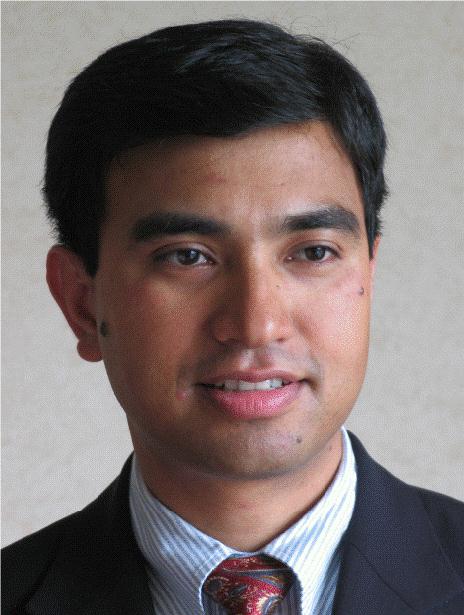
|
|
With rapid advances in related technologies in recent years, state-of-the-art virtual and augmented reality devices are increasingly blurring the border between the real and the virtual words. This seminar will examine the system-level requirements from cognitive neuroscience and human-factors considerations; review the advances in positional and motion tracking with visual-inertial sensing, perceptual computing, and 3D-graphics processing techniques; and examine spatial-light modulation and display technologies as well as end-to-end system architectures, toward the ultimate goal of achieving lifelike immersive and interactive applications and experiences.
Achin Bhowmik is the chief technology officer and executive vice president of engineering at Starkey, which is the largest hearing technology company in the US. Starkey is a privately held medical devices business with more than 5,000 employees and operations in more than 100 countries worldwide. In this role, Dr. Bhowmik is responsible for leading the company’s research and engineering efforts. Prior to joining Starkey, he was vice president and general manager of the Perceptual Computing Group at Intel Corporation. There, he was responsible for R&D, engineering, operations, and businesses in the areas of 3D sensing and interactive computing, computer vision and artificial intelligence, autonomous robots and drones, and immersive virtual and merged reality devices. Previously, he served as the chief of staff of the Personal Computing Group, Intel’s largest business unit. As an adjunct professor and guest lecturer, Dr. Bhowmik advises graduate research and teaches courses on human-computer interactions and perceptual computing technologies at the University of California, Berkeley, Stanford University, Liquid Crystal Institute of the Kent State University, Kyung Hee University, Seoul, and the Indian Institute of Technology, Gandhinagar. Dr. Bhowmik is a Fellow of the Society for Information Display (SID). He serves on the board of advisors for the Fung Institute for Engineering Leadership at UC Berkeley, the executive board for SID, and the board of directors for OpenCV. He received the Industrial Distinguished Leader Award from the Asia-Pacific Signal and Information Processing Association. He has over 200 publications, including two books and 34 issued patents.
Moderator: Grace Lee, Google, LLC
|
Track 1:
Display Technologies
2:40-4:10 pm
Room LL21DEF
|
SE-10: Flexible Display Technology Trends and Challenges
Ho Kyoon Chung
Chair Professor, SKKU Advanced Institute of Nanoscience and Technology
|
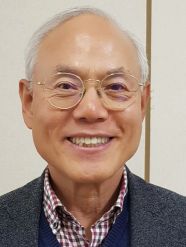
|
|
Display technology is rapidly moving from a rigid to a flexible format, starting with curved displays and transitioning to foldable and rollable form factors. However, several technical challenges must be overcome to ensure the reliability of the devices for repeated folding and rolling, in particular, when there is a bending radius less than 1 mm. This seminar will discuss key factors that govern mechanical durability and propose a measurement system for assessing reliability in various environmental conditions.
Ho Kyoon Chung received a B.S. in electronics engineering in 1973 from Seoul National University, an M.S. in 1977 from Case Western Reserve University, and a Ph.D. in electrical engineering in 1981 from University of Illinois at Urbana-Champaign. Dr. Chung is a chair professor at Sungkyunkwan University in Korea. Previously, he was executive vice president of Samsung SDI and the head of Samsung SDI Corporate R&D Center. Dr. Chung received a National Medal of Honor from the government of Korea in April 2006 for his contribution to the development of Korea science and technology, and a Special Recognition award from the Society of Information Display (SID), in June 2006, for his outstanding contributions to the development of AMOLED technology. In addition, his work in OLED technology has earned him the Korea Display Industry Grand Prize Award (2001), and the Samsung Chairman’s Award in Technical Excellence (2002) for his leadership in developing the company’s 15.1-in. AMOLED. More recently, he was elected a SID Fellow (2012), received the SKKU President Award for Excellence in Education and Research (2014), and the Karl Ferdinand Braun Prize from SID (2016).
Moderator: Daekyoung Kim, Nanosys
|
Track 1:
Display Technologies
4:30-6:00 pm
Room LL21DEF
|
SE-13: MiniLED Enabled the Latest Round of LCD Innovations
Shin-Tson Wu
Pegasus Professor
College of Optics and Photonics, University of Central Florida
|
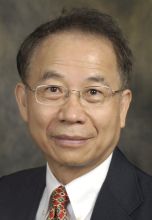
|
|
LCD, OLED, or MicroLED: Who wins? That is a debatable question. This seminar will discuss the prospects and challenges of these technologies. Emerging miniLED-enabled, high-dynamic-range, and fast-responding LCDs for AR, VR, smartphones, gaming monitors, TVs, sunlight-readable automotive displays, and public information displays will be emphasized.
Shin-Tson Wu is a Pegasus Professor in the College of Optics and Photonics at the University of Central Florida (UCF). Prior to joining UCF in 2001, he was with Hughes Research Labs in California, where the first laser and liquid-crystal-on-silicon were invented. Dr. Wu is among the first six inductees to the Florida Inventors Hall of Fame. He is a Charter Fellow of the National Academy of Inventors, and a Fellow of the IEEE, OSA, SID, and SPIE. Professor Wu is the recipient of the OSA Esther Hoffman Beller Medal (2014), SID Slottow-Owaki Prize (2011), OSA Joseph Fraunhofer Award (2010), SPIE G. G. Stokes Award (2008), and the SID Jan Rajchman Prize (2008). He is an endowed honorary professor of National Chiao Tung University (2017) and Nanjing University (2013). He was the founding editor-in-chief of the IEEE/OSA Journal of Display Technology. He has co-authored seven books, 550 journal papers, and obtained 90 US patents. Presently, he serves as the SID Honors and Awards committee chair.
Moderator: Deng-Ke Yang, Kent State University
|
Track 2:
Display Manufacturing Technologies
8:30-10:00 am
Room LL20CD
|
SE-2: Computational Near-to-Eye Displays with Focus Cues
Gordon Wetzstein
Assistant Professor, Electrical Engineering Department
Assistant Professor (by courtesy), Computer Science Department
Stanford University
|
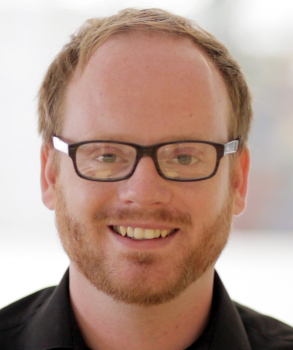
|
|
Immersive visual and experiential computing systems, i.e., virtual and augmented reality (VR/AR), are entering the consumer market, and in every immersive experience, the primary interface between the user and the digital world is the near-to-eye display. This seminar will discuss the frontiers of engineering next-generation opto-computational near-to-eye display systems to increase visual comfort and provide realistic and effective visual experiences.
Gordon Wetzstein is an assistant professor of electrical engineering and, by courtesy, of computer Sscience at Stanford University. He is the leader of the Stanford Computational Imaging Lab, an interdisciplinary research group focused on advancing imaging, microscopy, and display systems. At the intersection of computer graphics, machine vision, optics, scientific computing, and perception, Professor Wetzstein’s research has a wide range of applications in next-generation consumer electronics, scientific imaging, human-computer interaction, remote sensing, and many other areas. Prior to joining Stanford in 2014, Wetzstein was a research scientist in the Camera Culture Group at the MIT Media Lab. He received a Ph.D. in computer science from the University of British Columbia in 2011 and graduated with honors from Bauhaus University in Weimar, Germany, before that. His doctoral dissertation focuses on computational light modulation for image acquisition and display and won the Alain Fournier Ph.D. Dissertation Annual Award. Wetzstein is the recipient of an NSF CAREER award. He has won best paper awards at the International Conference on Computational Photography (ICCP) in 2011 and 2014, as well as a Laval Virtual Award in 2005.
Moderator: Yusin Lin, Applied Materials
|
Track 2:
Display Manufacturing Technologies
10:20-11:50 am
Room LL20CD
|
SE-5: Oxide and LTPS TFT Backplane Technologies for Foldable and Rollable Displays
Jin Jang
Professor, Advanced Display Research Center (ADRC)
Kyung Hee University
|
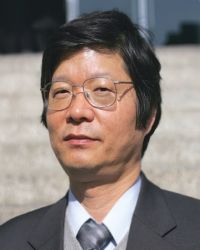
|
|
LTPS TFT backplanes on PI substrates are used for commercial smartphone displays. And oxide TFTs are studied for medium and large displays. This seminar will review current issues and the state-of-the-art technologies for oxide, and LTPS TFTs on PI substrate, including the strain effect in flexible TFTs.
Jin Jang is a professor in the department of information display at Kyung Hee University in Korea. He developed the world’s first full-color TFT-LCD on plastic, a flexible AMOLED display, and a transparent AMOLED display, which were presented at Display Week. He is the author or co-author of over 550 papers in SCI Journals such as Nature, Advanced Materials, Advanced Functional Materials, Advanced Energy Materials, Energy Environmental Science, APL, IEEE TED, and IEEE EDL. He is currently a director at the Advanced Display Research Center (ADRC). He is a Fellow of SID and served as a general chair of the IMID and Display Week conferences. He was awarded the George Smith Award from IEEE, the Slottow-Owaki Prize from SID, and the Ho-AM Award in Korea.
Moderator: Yongtaek Hong, Seoul National University, Korea
|
Track 2:
Display Manufacturing Technologies
12:50-2:20 pm
Room LL20CD
|
SE-8: Introduction to MicroLED Displays
Ioannis (John) Kymissis
Professor of Electrical Engineering
Columbia University
|

|
|
MicroLED technologies unlock the potential for LEDs to serve as active-emissive display elements at the pixel level, allowing for development of displays with extraordinary performance, including otherwise unavailable levels of contrast, luminance, and color gamut. This seminar will discuss the basics of LEDs and the strategies that have been developed for monolithic, nanowire, and pick-and-place microLED approaches. Several recently announced products and technical perspectives on the expectations for the impact of microLEDs on direct-view, flexible, stretchable, AR, VR, and non-display technologies will also be discussed.
Ioannis (John) Kymissis graduated with his SB, M.Eng., and Ph.D. degrees from MIT. His M.Eng. thesis was performed as a co-op at the IBM TJ Watson Research Lab on organic thin-film transistors, and his Ph.D. was obtained in the Microsystems Technology Lab at MIT, working on field-emission displays. After graduation, he spent three years as a postdoc in MIT's Laboratory for Organic Optics and Electronics, working on a variety of organic electronic devices, and also as a consulting engineer for QD Vision. He joined the faculty at Columbia University in electrical engineering in 2006 as an assistant professor. Dr. Kymissis has won a number of awards for his work, including the NSF CAREER award, the IEEE EDS Paul Rappaport award, the Vodaphone Americas Foundation Wireless Innovation Award, the MIT Clean Energy Prize, and a Verizon Powerful Answers award. A SID Fellow, he recently served a term as the editor-in-chief of the Journal of the Society for Information Display. In addition, he was the general chair for the 2014 Device Research Conference and is the program vice chair for the 2019 SID Display Week Symposium.
Moderator: Takahiro Ishinabe, Tohoku University
|
Track 2:
Display Manufacturing Technologies
2:40-4:10 pm
Room LL20CD
|
SE-11: Metal-Halide Perovskites for Light-Emitting Applications
Barry P. Rand
Associate Professor, Princeton University
Department of Electrical Engineering & the Andlinger Center for Energy and the Environment
|

|
|
Metal-halide perovskite materials, both wholly inorganic as well as hybrid organic-inorganic compositions, have garnered significant interest in the thin-film electronic devices community due to their promising optoelectronic properties. This seminar will review metal-halide perovskite semiconductors and their prospects as a next generation of optical sources, including stability aspects.
Barry P. Rand earned a BE in electrical engineering from The Cooper Union in 2001. Then he received M.A. and Ph.D. degrees in electrical engineering from Princeton University in 2003 and 2007, respectively. From 2007 to 2013, he was at IMEC in Leuven, Belgium, ultimately as a principal scientist. Since 2013, Dr. Rand has worked in the department of electrical engineering and the Andlinger Center for Energy and the Environment at Princeton University, where he is currently an associate professor. He has authored more than 115 refereed journal publications, has 20 issued US patents, and has received the 3M Nontenured Faculty Award (2014), DuPont Young Professor Award (2015), DARPA Young Faculty Award (2015), and the ONR Young Investigator Program Award (2016).
Moderator: Ruiqing (Ray) Ma, Nanosys
|
Track 2:
Display Manufacturing Technologies
4:30-6:00 pm
Room LL20CD
|
SE-14: Light-Field Displays
Nikhil Balram
Senior Director of Engineering for AR/VR
Google, LLC
|
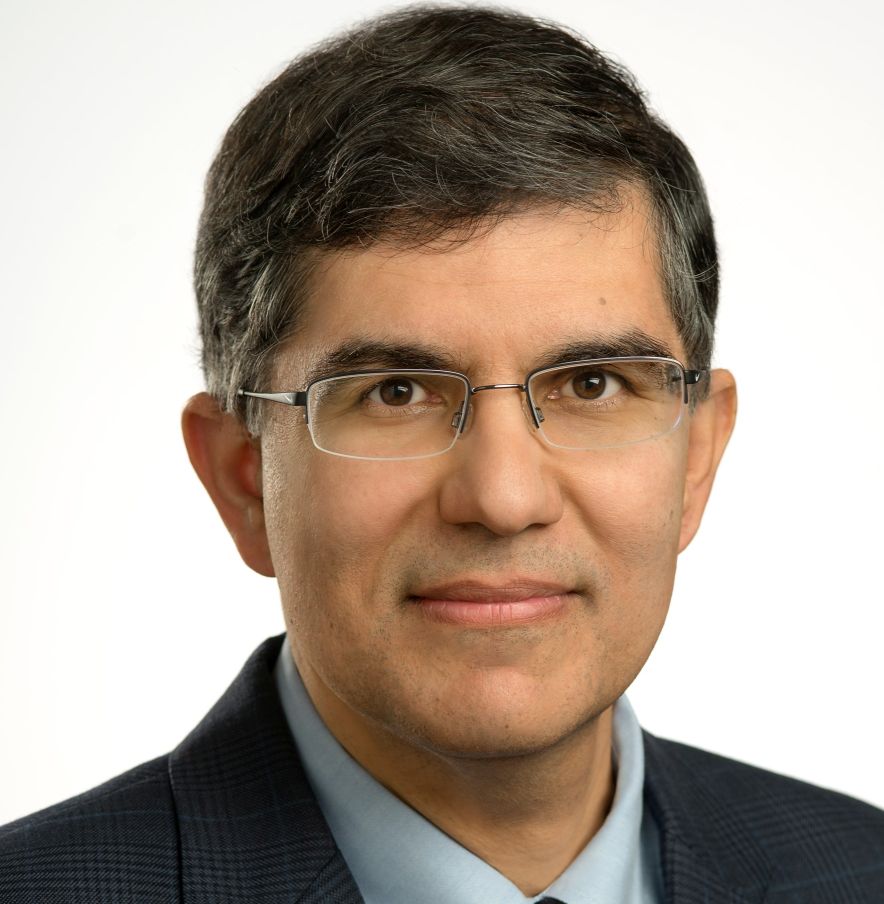
|
|
Light-field displays offer the promise of a natural and comfortable 3D viewing experience. This seminar will introduce light fields, briefly explain light-field imaging, and discuss the theory and design of state-of-the art light-field display systems. These are divided into two main classes — group (multi-user) displays for entertainment and information, and personal (near-to-eye) displays for AR and VR.
Dr. Nikhil Balram is senior director of engineering for augmented and virtual reality at Google, LLC. Prior to that he was president and CEO of Ricoh Innovations Corporation, a Silicon Valley company that creates global new businesses based on advanced information technology. At RIC, he incubated and launched new businesses in mobile visual search and digital health. With over 25 years of experience, Dr. Balram is widely recognized throughout industry and academia as an expert and innovator in advanced information and display technologies and has been an officer of several publicly listed companies. Products and technologies developed by teams led by him have been used by millions of people and have won over a dozen major awards. He has received numerous awards, including, most recently, the 2016 Otto Schade Prize from the Society for Information Display (SID), a 2015 Industrial Distinguished Leader Award from the Asia-Pacific Signal and Information Processing Association (APSIPA), a 2012 Gold Stevie Award for “Executive of the Year” in the electronics category at The 9th Annual International Business Awards, a 2012 Fellow Award from the Society for Information Display (SID), and a 2011 Alumni Achievement Award from Carnegie Mellon University. Dr. Balram is also an adjunct professor of electrical engineering at Carnegie Mellon University, a guest professor of design and innovation at the Indian Institute of Technology (IIT) in Gandhinagar, India, and a former visiting professor of vision science at the University of California, Berkeley. He is program chair for Display Week 2019 and serves as a guest editor for light-field displays for Information Display Magazine. He has over 125 US and international patents granted or pending, more than 60 technical publications, including two invited book chapters, and has given over 30 keynote speeches at major conferences and events worldwide. He received his B.S., M.S., and Ph.D. in electrical engineering from Carnegie Mellon University.
Moderator: Jonghyun Kim, nVidia
|
Track 3:
Display Technologies and Applications
8:30-10:00 am
Room LL21ABC
|
SE-3: Display and Emerging Technologies Market Forecast — LCD, OLED, Micro and MiniLED, E-Paper, Touch Screens, Smart Windows, and Voice Recognition
Jennifer Colegrove
CEO and Principal Analyst, Touch Display Research, Inc.
|
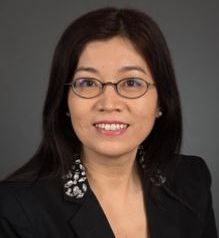
|
|
In this seminar, Dr. Colegrove will provide a market forecast of the overall display market from 2019 till 2027 and a market forecast of emerging technologies. New opportunities will also be discussed: improved LCD, micro and miniLED, flexible and curved displays, quantum dots, high resolution, OLED displays, e-Paper, touch screens, smart windows, and voice recognition.
Jennifer K. Colegrove is the founder, CEO, and principal analyst of Touch Display Research Inc. a market research and consulting firm that focuses on touch-screen and emerging display technologies. Dr. Colegrove authors reports and performs consulting projects on technologies including touch screens, ITO replacement, active pen, smart windows, near-to-eye displays, flexible displays, OLED displays, OLED lighting, quantum dots, micro and miniLEDs, 3D displays, e-Paper displays, pocket projectors, gesture control, voice control, and eye control. Dr. Colegrove has advised over 200 companies through her standard reports or consulting projects in recent years. Her reputation in the industry and passion for the touch-display market have led to a syndicated readership of hundreds of thousands of professionals. She has authored over 100 forecast reports and more than 120 articles. Before founding Touch Display Research Inc., Colegrove was a vice president at DisplaySearch (acquired by IHS) for over four years and a senior analyst at iSuppli (acquired by IHS) for two years. Prior to that, Colegrove performed due diligence for Intel Capital, the venture capital arm of Intel, as a senior display engineer. Dr. Colegrove has been a featured speaker and session chairperson at over 80 conferences worldwide. She received a Ph.D. from the Liquid Crystal Institute at Kent State University in Ohio. She received both her bachelor’s and master’s degrees with honors from Beijing University in China.
Moderator: Fang-Cheng Lin, Apple, Inc.
|
Track 3:
Display Technologies and Applications
10:20-11:50 am
Room LL21ABC
|
SE-6: Display Metrology: Basics, Framework, and Applications
Michael E. Becker
Scientific Advisor, Instrument Systems GmbH
|

|
|
Based on typical application scenarios for electro-optical display screens, this seminar develops a generalized structure for display metrology and introduces the main components, their required features, and limitations. It presents a range of practical aspects of display metrology with focus on variations with viewing direction and on-display performance under ambient illumination at different temperatures as required for, e.g., automotive displays.
After completion of his studies in electrical engineering,
Michael E. Becker completed his research assignment at the University of Karlsruhe in Germany in 1984 with a dissertation on numerical modeling of display systems with liquid-crystal cells, for which he earned a doctoral degree (Dr.-Ing./Ph.D.). He then commercialized the concepts developed at the university as department head at autronic GmbH in Karlsruhe (1985–1993) and became a managing director of the joint-venture autronic-Melchers GmbH in Karlsruhe (1993–2001). In 2002, he established and incorporated Display-Messtechnik&Systeme. He has been actively contributing to international standards in IEC TC110 since 1987; in 2006, he received the IEC-1906 Award. Since 1994, he has provided numerous contributions to the Standardization of Visual Ergonomics of Video Display Terminals, ISO 13 406 and ISO 9241-7, ISO 9241-3xx. He has been a contributor to the VESA Flat Panel Display Measurement Standard, ICDM Vice-Chairman for Europe since 2008; and a member of the ICDM Executive Committee. He has authored over 70 publications and is listed as inventor in about 10 patents. He has presented display metrology seminars for several years at SID’s Display Week.
Moderator: John Penczek, National Institute of Standards and Technology (NIST)
|
Track 3:
Display Technologies and Applications
12:50-2:20 pm
Room LL21ABC
|
SE-9: High-Dynamic-Range: A Consumer Ecosystem
Timo Kunkel and Rob Wanat
Research Scientists, Dolby Laboratories
|
 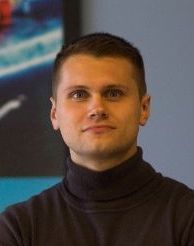
|
|
High-dynamic-range (HDR) viewing experiences are now widely available to consumers for both video content and displays. This seminar details the key scene physics and perceptual aspects motivating the need for HDR. In addition, capture, display, and ecosystems for HDR involving static and dynamic metadata will be covered.
Timo Kunkel is a senior color and imaging researcher at Dolby Labs, Inc., in Sunnyvale, CA. His main areas of research are perception-based color models, high-dynamic-range imaging, advanced display technologies, and psychophysics. Before moving to the US, he worked for Dolby in Vancouver, Canada, investigating the dynamic-range limits of the human visual system and working on creating novel color-appearance models. Over the last 12 years, he also worked as an architecture and landscape photographer for clients in Europe and the US, and as head of pre-press imaging and co-founder of a German children’s-book publisher. Dr. Kunkel received his Ph.D. in computer science from the University of Bristol, UK, and a M.Sc. in physical geosciences from the University of Freiburg in Germany.
Robert Wanat received his M.S. in computer science from West Pomeranian University of Technology, Szczecin, in 2011. He went on to complete his Ph.D. in computer graphics at Bangor University, Wales, in 2015 and currently works as a senior color scientist for Dolby Laboratories in Sunnyvale, CA. His work relates to creating models of the visual system, which are then used in the development of the Dolby Vision ecosystem. His main interests include human visual perception with a focus on the effects of ambient adaptation on color perception, scotopic and mesopic vision, and modeling early neural responses of the HVS. He is a member of the Society for Information Display (SID) and ACM.
Moderator: Jennifer Lin, AUO
|
Track 3:
Display Technologies and Applications
2:40-4:10 pm
Room LL21ABC
|
SE-12: E-Paper Displays
Bo-Ru (Paul) Yang
Professor, Sun Yat-Sen University
|
Yang.png)
|
|
Electronic paper (e-Paper) displays have inherent characteristics of bistability and good sunlight readability, making them very suitable for future IoT environments. This seminar will introduce the prevailing e-Paper technologies, briefly explain the theory and design concepts, and discuss the future applications of e-Paper displays.
Bo-Ru (Paul) Yang is a professor at Sun Yat-Sen University, China, where his focus is researching flexible electronics and displays. Prior to that, he worked with SiPix and E Ink to develop the new generation of e-Paper, targeting fast-switching, multiple color, and good stability. His developments related to the E Ink “recipe,” driving waveform, device structures, and production designs. Most of his patents have been implemented into mass production. An active member of SID, he is an associate editor for the Journal of the Society for Information Display. In addition, for Display Week 2019 he is chair of the e-Paper and Flexible Display committee, deputy chair of the Monday Seminars, and vice chair of the Special Topic: Bendable, Foldable, Rollable Displays. He is also on the committee of SEMI Flextech China, Korean IMID emergent display, and China ICDT flexible display. He received his Ph.D. and M.S. degrees from National Chiao-Tung University and National Tsing-Hua University, Taiwan, respectively, where he also finished an MBA program simultaneously. Furthermore, he finished his post-graduate studies at University of Oxford, UK, in 2007 and Tohoku UniversityJapan, in 2008 as a doctoral researcher. Dr. Yang received SID’s distinguished paper award (2016) and has received seven “Best Paper” awards at international conferences, including the IEEE/International Conference on Sensor Technology (ICST), International Display Manufacturing Conference (IDMC), and International Conference on Flexible and Printed Electronics (ICFPE). He has over 70 patent applications and 50 journal publications in the field of flexible display and electronics.
Moderator: Qin Zhong, National Chiao Tung University (NCTU)
|
Track 3:
Display Technologies and Applications
4:30-6:00 pm
Room LL21ABC
|
SE-15: Automotive Displays
Thomas Seder (GM Technical Fellow, Chief Technologist-HMI and Lab Group Manager within GM R&D)
Jamieson Christmas (CEO, Envisics)
Patricia Scarpaci (Executive Vice President of Automotive, Envisics)
|
  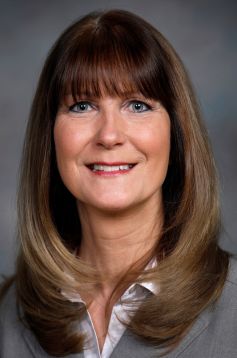
|
|
This seminar will cover direct-view head-down displays (HDDs), head-up displays (HUDs), and augmented-reality head-up displays (AR HUDs). We will begin with a discussion of the human factors-driven requirements for these display systems. The presentation will then segue into a description of the various display technologies that are capable of achieving the requirements. Both currently available and emerging HDD, HUD, and AR HUD technologies will be described, along with their utility in the automotive environment.
Thomas Seder is currently a General Motors Technical Fellow, chief technologist-HMI, and lab group manager within GM R&D. He is responsible for technology road mapping and developing advanced display and control technologies and cockpit interaction designs. Dr. Seder began his career at the Rockwell Science Center, where he developed high-energy-density materials for use as propellants and chemical laser fuels. He then transferred to Rockwell Collins to lead the company’s display technology and human machine interface research group. Ultimately, he became the director of advanced technology and product planning for Rockwell Collins Air Transport Systems. Seder then joined the Guardian Industries Science Center as the director of sputtered films technology, leading an organization charged with developing thin-film optics technologies and products. Finally, Dr. Seder acted as the director of advanced technology at Guardian prior to joining GM in 2006. He holds a Ph.D. in physical chemistry from Northwestern University and an M.B.A. from the University of Iowa.
Jamieson Christmas has recently been appointed as CEO of the Envisics group that specializes in the development and supply of holographic technologies for the automotive market, with a special focus on augmented-reality head-up displays. Prior to this appointment, Dr. Christmas was EVP at DAQRI and responsible for the DAQRI automotive business unit and DAQRI holographic research activities. He joined DAQRI in 2016 when they acquired Two Trees Photonics Limited, the dynamic holography company he cofounded. Prior to this, he held a number of engineering leadership roles with Alps Electric UK Limited, a leading global manufacturer of high-quality electronic components for mobile devices, home electronics, industrial, and automotive markets. He graduated from Anglia Ruskin University with a first-class honors degree in electronic and electrical engineering. Christmas is a world-leading expert in the field of holography, the inventor of over 50 granted patents, and was the winner of the prestigious SID UK Ben Sturgeon Award in 2013 for his significant contribution to the field of displays.
Patricia Scarpaci recently joined Envisics — an innovator in the development of holographic head-up displays and other products for the automotive industry — as executive vice president of Automotive. In this role, she is responsible for business development and commercialization, including leading the design, development and execution of holographic products for the automotive business unit. Prior to joining Envisics, Scarpaci was employed by Panasonic Automotive Systems Company for 19 years. At Panasonic, she held the position of group manager of sales for the General Motors account, which at its peak had annual revenue exceeding $800 million. She led a team of sales professionals responsible for audio components, batteries, cameras, head-up displays, infotainment, rear-seat entertainment, and various other electronic components. She has a master’s degree in business administration from Wayne State University, with a focus in strategic management. Scarpaci’s career in the automotive industry began over 31 years ago. Hired by General Motors as a new college graduate, she quickly was promoted from entry-level positions to the leadership ranks. During her 12 years at GM, she held several leadership positions in both Materials Management and Purchasing. Patricia’s education includes a master’s degree in business administration from Wayne State University, with a focus in Strategic Management. She also received a bachelor’s degree from Ferris State University where she graduated with the highest honors and was recognized by Who’s Who in American College and University Students.
Moderator: Sang-Hee Ko Park, Korea Advanced Institute of Science and Technology (KAIST)
|